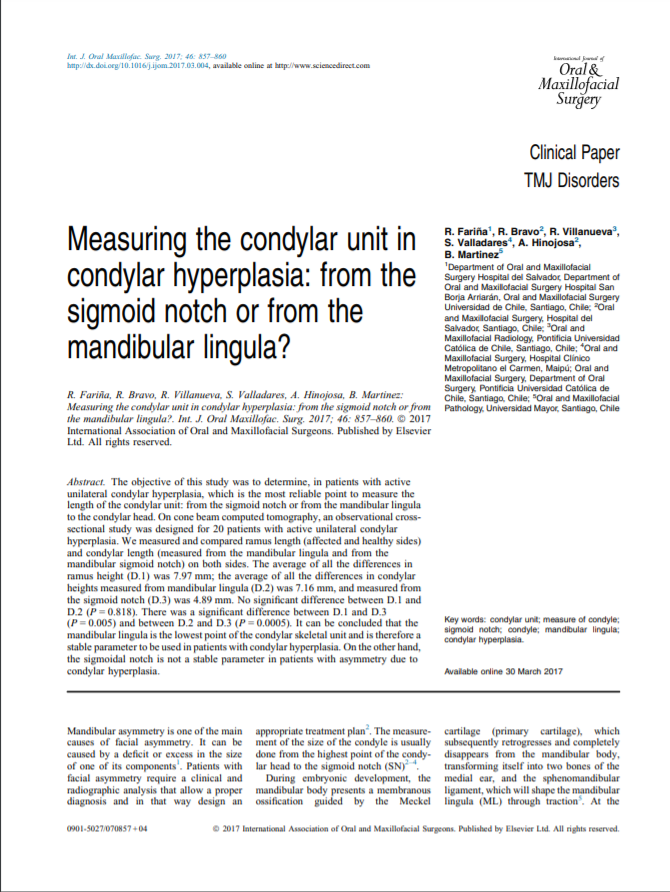Measuring the condylar unit in condylar hyperplasia: from the sigmoid notch or from the mandibular lingula?

Fecha
2017Autor
Fariña R., Bravo R., Villanueva R., Valladares S., Hinojosa A.
Martínez, B. [Escuela de Odontología, Universidad Mayor, Chile]
Ubicación geográfica
Notas
HERRAMIENTAS
Acceda a títulos restringidos
¿Cómo descargar?Resumen
The objective of this study was to determine, in patients with active unilateral condylar hyperplasia, which is the most reliable point to measure the length of the condylar unit: from the sigmoid notch or from the mandibular lingula to the condylar head. On cone beam computed tomography, an observational crosssectional study was designed for 20 patients with active unilateral condylar hyperplasia. We measured and compared ramus length (affected and healthy sides) and condylar length (measured from the mandibular lingula and from the mandibular sigmoid notch) on both sides. The average of all the differences in ramus height (D.1) was 7.97 mm; the average of all the differences in condylar heights measured from mandibular lingula (D.2) was 7.16 Aim, and measured from the sigmoid notch (D.3) was 4.89 mm. No significant difference between D.1 and D.2 (P = 0.818). There was a significant difference between D.1 and D.3 (P = 0.005) and between D.2 and D.3 (P = 0.0005). It can be concluded that the mandibular lingula is the lowest point of the condylar skeletal unit and is therefore a stable parameter to be used in patients with condylar hyperplasia. On the other hand, the sigmoidal notch is not a stable parameter in patients with asymmetry due to condylar hyperplasia.
URI
http://repositorio.uchile.cl/bitstream/handle/2250/147936/Measuring-the-condylar-unit.pdf?sequence=1https://bibliotecadigital.umayor.cl:2145/10.1016/j.ijom.2017.03.004
https://pubmed.ncbi.nlm.nih.gov/28366447/
http://repositorio.umayor.cl/xmlui/handle/sibum/6919
Coleccion/es a la/s que pertenece:
Si usted es autor(a) de este documento y NO desea que su publicación tenga acceso público en este repositorio, por favor complete el formulario aquí.